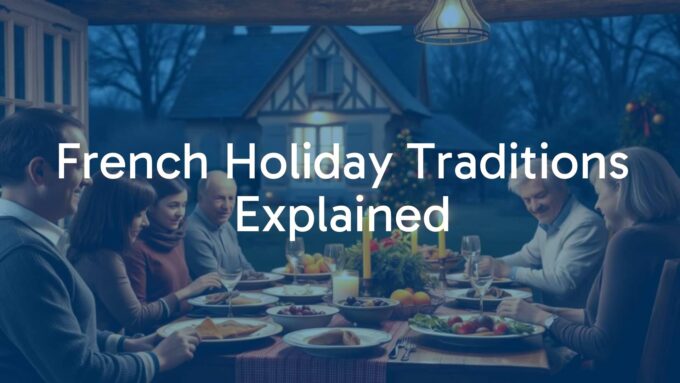What Is the French Monarchy Family Tree?
The French monarchy family tree is a detailed map of how France’s kings and queens were related and how power passed among them. It shows not just a list of who ruled, but also the connections and marriages that held the royal family together, sometimes peacefully, other times through conflict. This family tree tracks every king and queen, their spouses, children, and branches of the family, from the earliest rulers to the last kings in the 1800s. Looking at this genealogy helps explain how France changed over time and how power shifted from one branch or monarch to another.
Looking at this family tree shows the rise and fall of royal fortunes, important marriages that built alliances, and conflicts that changed who ruled. It visually ties together centuries of French history, including periods of revolution and restoration.
Why Study Royal Family Lineage?
Learning about the royal family tree gives us a clear view of France’s past-its politics, culture, and major events. It isn’t just about remembering names and dates. By following the rules of inheritance, known as primogeniture (where the oldest son inherits the throne), and seeing where rules were broken, we can understand why France grew or lost parts of its territory, and how royal marriages shaped European politics. These patterns help explain how modern royal families in Europe are connected as well.
Family trees also show language and cultural changes. The titles used, and even simple family terms, let us see how the French language changed over time. Key people from these trees show up in French art, stories, and modern culture-from famous landmarks to phrases that have stuck around in everyday language.
How Were French Royal Family Trees Structured?
French royal family trees were arranged to show clear lines of family connections. These diagrams display who the main monarchs were, who they married, and how their children fit into the wider family. Historians use these trees to trace who inherited the throne, who had legitimate claims, and how different family branches split and reconnected. Instead of a simple list, these trees look more like charts with lines connecting fathers, mothers, children, and branches to other relatives.

Often, the tree starts with a well-known king and spreads downward, adding each generation. The family tree usually lists names with their birth and death dates, marriage dates, and any important titles. Since the French monarchy lasted over a thousand years, the full family tree is very large and includes hundreds of people.
Key Terms and Titles in French Royal Genealogy
Understanding a French royal family tree means knowing some important terms. The main title is “Roi” (King). His wife is the “Reine” (Queen), and their children are “Prince” and “Princesse.” These children often married royalty from other countries, which expanded their network of alliances.
“Dauphin” is another key word. It refers to the heir to the throne, usually the king’s oldest son. The word comes from the Dauphiné region in France. Another important title is “Regent,” given to someone who rules while the rightful king is either too young, elsewhere, or unable to rule. Regents were usually close family members and made sure the monarchy stayed stable during uncertain times.
Understanding Lineage and Succession Laws
Every royal family tree depends on rules about who should inherit the throne. In France, the usual system was primogeniture-the oldest legitimate son of the reigning king became the next king. This was meant to keep things clear, but history was often messier. Sometimes wars, a lack of male heirs, or special laws (like the Salic Law banning women from inheriting the throne) changed who ruled next.
Marriages in the royal family were very important. These weren’t usually love matches-they were political moves to create alliances, join territories, or end disputes. Knowing who married whom helps us understand bigger European politics over the centuries. Birth, death, and marriage dates are always included because they show how and when the family tree changed.
Language and Symbols Used in French Royal Family Trees
The wording in these family trees uses historical and specialist terms, so it helps to get familiar with the language used. Some terms stayed the same, while others changed as French society changed.
Family trees don’t use just names, but also symbols and formatting. For example, kings might be written in bold capitals, and lines or arrows show which children came from which parents. This layout makes it faster and easier to see connections between generations.
Common Family Relationships and Symbols
Below is a list of typical French family words found in these trees:
| French Term | Translation |
|---|---|
| Père | Father |
| Mère | Mother |
| Fils | Son |
| Fille | Daughter |
| Frère | Brother |
| Sœur | Sister |
| Oncle | Uncle |
| Tante | Aunt |
| Cousin(e) | Cousin |
These basic words are the building blocks of royal family trees. Connecting lines between names show parent-child and sibling relationships, making it easy to follow even in very large genealogies.
Titles and Honorifics in French Nobility
There are many other titles in the royal family tree that show status or important roles. The king is called “Votre Majesté” (Your Majesty), while princes and princesses are called “Votre Altesse” (Your Highness). These titles showed respect and kept order at court.
Some kings are remembered by special titles. For example, Louis XIV is often called “Le Roi Soleil” (the Sun King), which summed up his power and the importance of his reign. “Le Régent” was used for someone ruling in place of the king, like during the childhood of Louis XV. These titles changed a bit over time, reflecting shifts in how people saw the monarchy.
Major Dynasties in the French Monarchy Family Tree
France’s monarchy was ruled by a series of powerful families called dynasties. Each one played a part in shaping the country’s laws, territory, and culture. Although the earliest kings were part of the wider Frankish group, family trees usually start with Pepin the Short, who began the Carolingian dynasty.
Carolingian Dynasty (751-987)
The Carolingians ruled from 751 to 987. Their most famous member was Charlemagne (Charles the Great), who expanded his empire over much of Western Europe and encouraged learning and culture. When Charlemagne’s descendants struggled to keep the empire together, it split into different kingdoms. One of these became France. Even after their power faded, the Carolingians influenced future monarchies by setting early examples for ruling and organizing the kingdom.

Capetian Dynasty (987-1848)
The Capetians were the longest-ruling family in French history, from 987 to 1848. Their rule lasted so long that they had many smaller branches, called cadet branches. For over 300 years, they kept a straight line of male succession, helping keep the monarchy strong and stable.
They managed to turn France into a stronger, more united kingdom. Through careful marriages, wars, and wise politics, they built up the country and made Paris the center of power.
Direct Capetians (987-1328)
This group started with Hugh Capet, who became king in 987. Though at first weak against powerful lords, the Capetians set up a system that lasted for centuries. The direct Capetians included famous kings like Louis VI, Louis VII, Philip II Augustus, Louis VIII, Louis IX (also called Saint Louis), Philip III, and Philip IV, among others. They helped build government systems, courts, and strengthened the country’s culture and laws.
House of Valois (1328-1589)
When the direct line of Capetian kings ended, the House of Valois took over in 1328. Their rise was one of the sparks for the Hundred Years’ War. The Valois kings-like Philip VI, John II, Charles V through Charles VIII-dealt with huge challenges, including wars with England, deadly plagues, and religious conflicts. Charles VII, with help from Joan of Arc, finally ended the English threat. The Valois period also produced side branches, such as the House of Valois-Orléans (Louis XII) and House of Valois-Angoulême (Francis I, Henry II, Francis II, Charles IX, Henry III).
House of Bourbon (1589-1792, 1814-1830)
The Bourbon family ruled from 1589 until the French Revolution in 1792, and again during the Bourbon Restoration (1814-1830). Henry IV was the first Bourbon king. Louis XIV, known as the Sun King, made France richer, stronger, and turned Versailles into a symbol of royal power. Other well-known kings include Louis XIII, Louis XV, and Louis XVI-the last king before the Revolution. The Bourbon kings often struggled with financial and social issues that eventually led to their dynasty’s end.

Other Branches and Claimants
The French monarchy also had younger offshoots. These “cadet branches” weren’t usually on the throne, but they held important positions, married into other royal families, and sometimes came to power, like the Orléans branch during the July Monarchy (1830-1848) with King Louis Philippe I. The Bonaparte family (Napoleon I, Napoleon III) gained power during the Empire periods, but aren’t considered part of the main pre-Revolutionary monarchy.
| Dynasty | Period | Main Figures |
|---|---|---|
| Carolingian | 751-987 | Charlemagne, Louis the Pious |
| Capetian (Direct) | 987-1328 | Hugh Capet, Louis IX |
| Valois | 1328-1589 | Charles VII, Louis XI, Francis I |
| Bourbon | 1589-1792, 1814-1830 | Henry IV, Louis XIV, Louis XVI |
Key Figures in the French Monarchy Family Tree
While hundreds of people appear in the French royal family tree, some made a bigger mark on history than others. Here are a few who played major roles:
- Charlemagne (742-814): Known as Charles the Great, he ruled a vast empire and was crowned emperor in 800. He promoted learning and culture, and his descendants began the line of French kings.
- Hugh Capet (c. 939-996): His rise to the throne in 987 started the Capetian dynasty, ending the Carolingian period and bringing stability to France for centuries.
- Louis IX (1214-1270), or Saint Louis: Famous for his fairness, devotion, and legal reforms. He led two crusades and is the only French king to become a saint.
- Louis XIV (1638-1715), the Sun King: Ruled for 72 years, centralizing royal power and building Versailles. He made France a leader in European politics and culture.
- Marie Antoinette (1755-1793): The last queen before the Revolution, she was married to Louis XVI. Her execution, along with her husband’s, signaled the dramatic end of the monarchy.
Major Events That Shaped the French Royal Lineage
The royal line wasn’t always a straight path. Big events often changed who ruled and even which family was in power:
The Hundred Years’ War (1337-1453)
This long war with England began when the direct Capetian rulers ended in 1328. The Valois family took the throne, but English kings claimed they had a right to it, sparking conflict. The war saw terrible destruction in France but ended with the Valois dynasty stronger and France more united by a sense of shared identity.
The Bourbon Restoration and the End of the Monarchy
After Napoleon was defeated, the Bourbon kings returned from 1814 to 1830. They tried to mix old royal traditions with new ideas from the revolution, but problems between conservatives and those wanting change led to more unrest. The July Revolution in 1830 brought the Orléans branch to power, but even this didn’t last. The Revolution of 1848 finally ended royal rule in France for good.

Influence of French Royal Family Trees on Modern France
Even though France has been a republic for over 150 years, the legacy of its monarchy is still important. The family tree of the royals shapes much of France’s culture, art, and legal ideas today.
France’s borders, famous palaces, and even some parts of its legal system trace back to the decisions made by kings and queens. Their stories and legacies show up in everything from popular television shows to literature and inspire a national sense of identity and pride.
Impact on Culture and National Identity
Many French people still know and talk about the famous figures from the monarchy, like Charlemagne, Louis XIV, and Marie Antoinette. Their stories appear in books, movies, and art. This keeps the memory and lessons of the past alive and shapes how people in France see themselves, even in a modern republic.
Buildings like the Palace of Versailles, built by Louis XIV, are still major tourist attractions and symbols of France’s history of power and style. These sites connect today’s visitors with royal times and continue to inspire creativity.
Royal Influence on Law and Tradition
Some practices and principles in French law and government have roots that go back to the monarchy. The way France is run, with its strong central government, started under Capetian and Bourbon kings. Some modern ceremonies and government protocols, even without a king, still echo royal customs.
The French interest in genealogy and family history, even among common citizens, comes from the importance the monarchy placed on lineage. Although modern France is a republic, the links to its royal past are clear in many areas of life.












Leave a comment